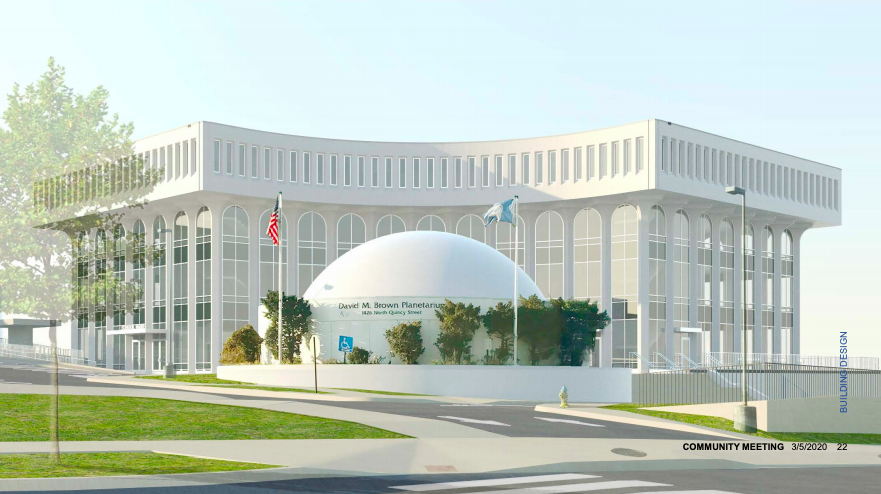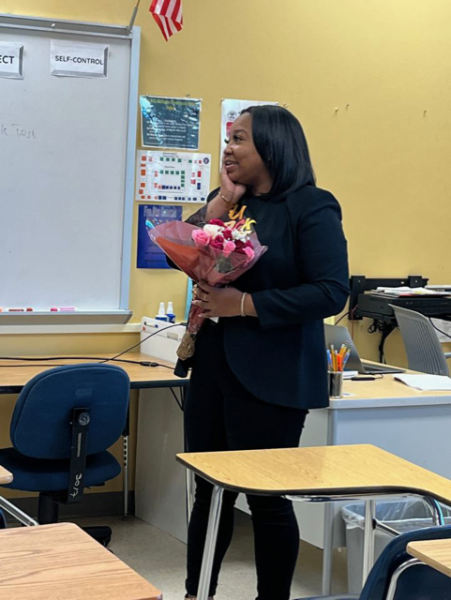Learning in the future: A look inside the Education Center project
In December 2018, the School Board approved the Education Center (Ed Center) Reuse Project. The Ed Center is located behind the David M. Brown Planetarium and used to be an office building. While it was originally scheduled for opening at the beginning of the 2020-21 school year, the process was delayed due to COVID-19.
“[The opening is] projected for September 2022,” Robin Hodges, a project manager for the Arlington Public Schools (APS) Department of Design and Construction Services, said.
When the Ed Center opens, it will become an additional part of the school and can accommodate 500 to 600 students. All five floors of the building will be used, and there are rooms for administrators, teachers and students.
“As far as the types of spaces that are here, we have classrooms, we have a couple of labs, we have an art project room, and on the ground floor we also have an intended [physical education] space that could be for cardio equipment or for weight room equipment,” Hodges said.
Hodges is also pleased with the Ed Center’s use of frits on the windows, since the building is about 60 percent glass. Frits are small dots that are printed onto the glass and work to reduce solar heat gain. They are organized in a gradient pattern from 40 percent density at the top to 20 percent near the middle.
“Its intent is to be an energy saving model for the school,” Hodges said. “So right now, the original glass was kind of painted black in certain areas. When [architects] showed the sun exposure on each facade of the building, you [could] see which areas, depending on when the sun sets and sun rises, certain parts of this building were getting an extreme amount of heat from direct sunlight than others.”
Ultimately, Hodges is excited to see the remodeled Ed Center in its entirety.
“I’m looking forward to seeing how W-L will be able to get the most use out of their new space down here,” Hodges said. “We don’t typically have annexes within APS. It’s exciting — this will be, to my knowledge, the first college-style campus type of addition to a high school.”
















